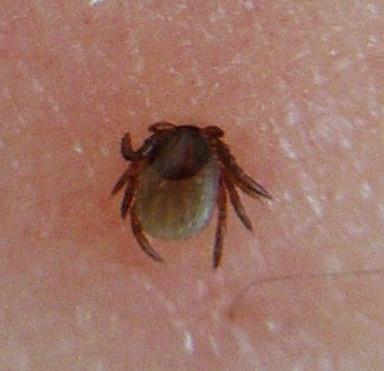How do ticks suck blood?
The tick does not attach to its host straight away after getting on the body, but usually wanders and searches for a convenient location like soft and damp skin. Such places can be the armpits, groins, the back of knees, behind ears or the belly. Ticks also can attach to any other part of the body, also on the head surrounded by hair.
The ticks mouthparts consist of feeding structure called the capitulum, which is designed for piercing skin and sucking blood through a hypostome. The hypostome is a harpoon-like structure with reverse hooks that ensure a firm grip. The tick secretes saliva into the wound, creating a "cement" layer around the hypostome. Therefore, removal of a tick that has been attached for some time can be challenging. The ticks saliva contains even more substances which help overcome the hosts skin defenses. Some of these are anticoagulants that hinder blood clotting and other compounds prevent inflammation of the tissue, hindering the development of itchiness which would alert the host of the tick attachment. The saliva also contains compounds that silence the immune response of the host to the tick-bite. This provides conditions that allow the transmission of an infection to take place. The feeding consists of two phases. In the first phase there is a slow intake of host blood.

Important is the presence of tick saliva containing anticoagulants (compounds that hinder blood clotting), as well as cytokines and prostaglandins, that block the immune response of the host on the attached tick. After the first feeding phase, the tick salivary glands get enlarged and secrete large amounts of fluid during the second feeding phase. This phase occurs after 24 - 48 hours and is accompanied by a fast intake of blood from the host. If the tick is a carrier of causative agents of infectious diseases, which are present in its salivary glands, after the enlargement the pathogens can multiply and increase the risk of disease transmission during the next hours. Thus, it is very important to check for the presence of attached ticks immediately after returning home from a day spent in nature, and remove them right away if some are present.